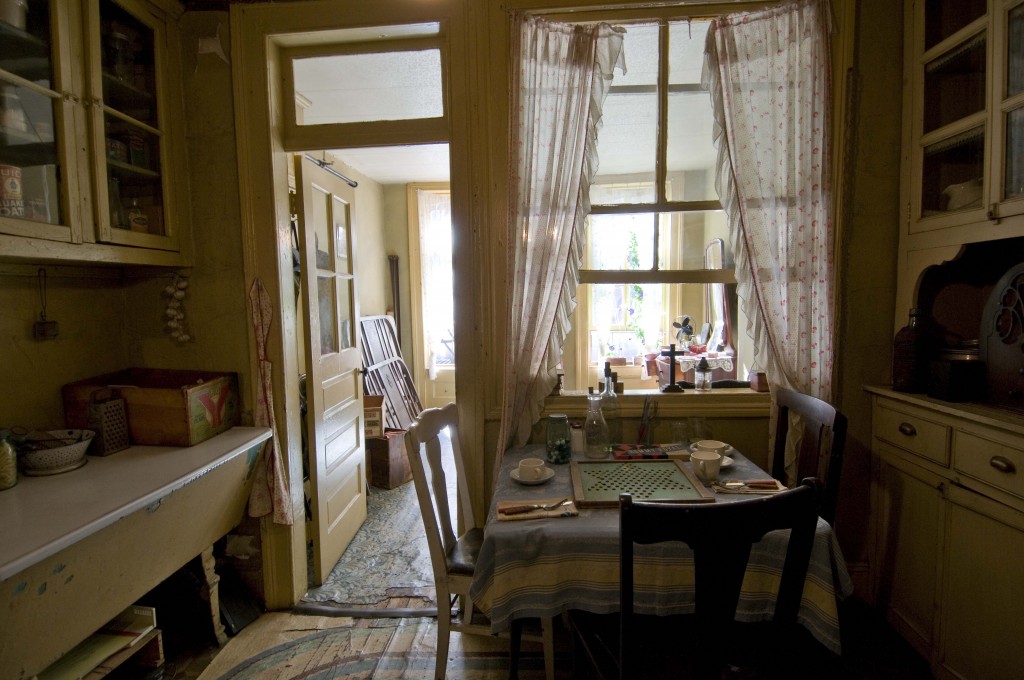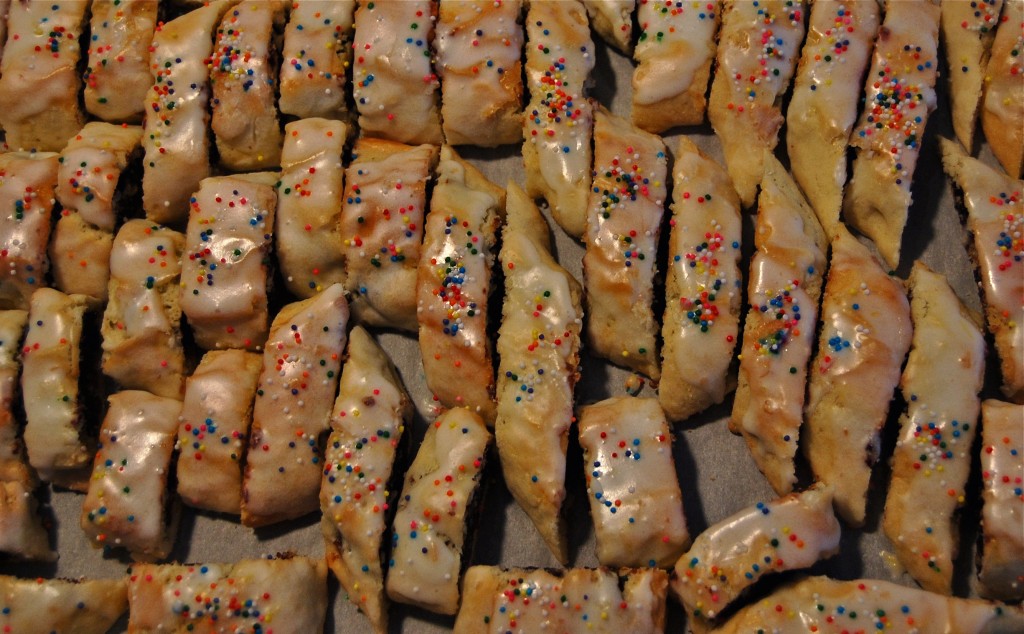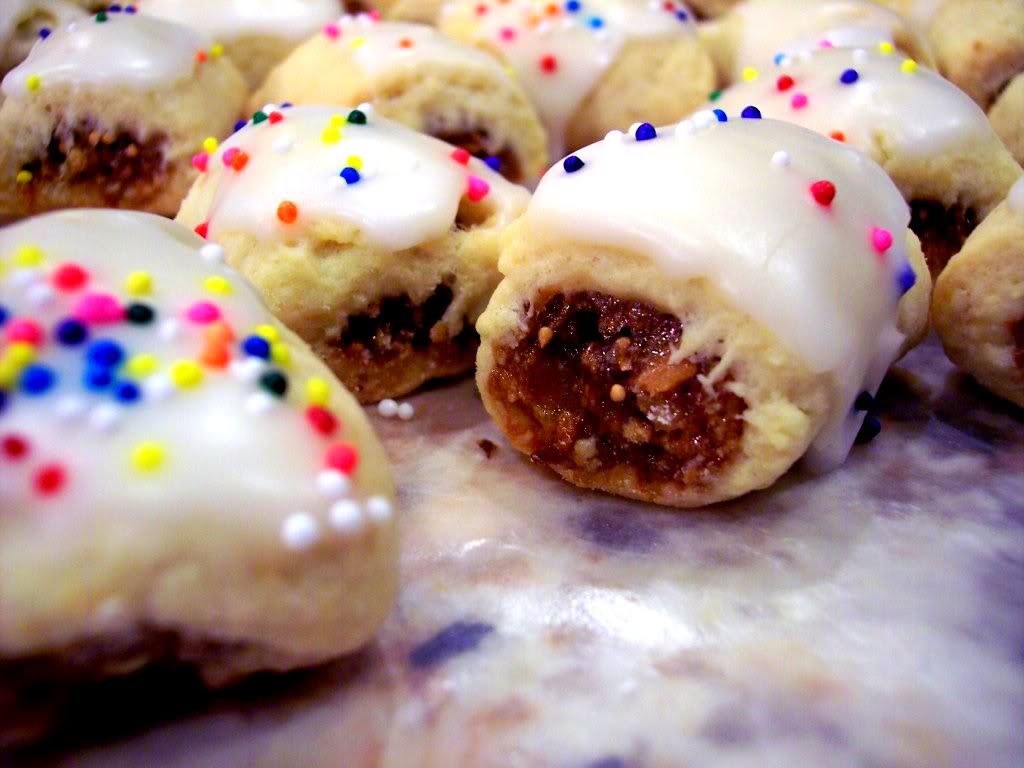Blog Archive
Traditions We Bake
Somehow, among the beloved sauerbraten (a German pot roast) and the latkes with meltingly soft home-made applesauce, the crackling roast duck, the braised red cabbage, and the jelly doughnuts that leave us licking jam from our fingers and wiping sugar from our cheeks, a traditional Sicilian Christmas cookie called cucidati became my German-Jewish family’s most prized holiday recipe.
‘Mary Cookies’, as we know them, came to us by way of my mother’s childhood neighbor, Mary. My mother, the only child of two German immigrants, grew up in the 1950’s in a snowy upstate New York farming town where her bookworm/flutist identity was equally as out of place as my grandfather’s Prussian professor-physician persona. Needless to say, no one there had ever heard of a latke.
Every year, my grandmother decorated their home with pine boughs and glass ornaments, ordered traditional German stollen, and roasted a Christmas goose, but Mary brought lasagna and the real holiday cheer –her cookies. Mary cookies are an improved fig-newton, a far more adult version of the hum-drum “fruit and cake.” A complex, brandy-soaked, filling of figs, nuts, spices and chocolate is wrapped up in a crumbly buttery dough, frosted with a bright lemon-laced icing, and decorated with colored sprinkles.
In the late 60’s, my mother made her artsy, liberal sojourn to Sarah Lawrence College, and eventually settled with my Bronx-raised dad in New York City’s suburbia. Mary still lives upstate, makes lasagna every year, and always sends a Christmas card. And so, armed with Mary’s recipe, my parents began to forge a Christmas tradition of their own.
Through the years, Mary cookie making has been a somewhat hair-raising production involving advanced planning, an unreasonably sticky dough, a finicky procedure with a jelly-roll pan, and some very scrooge-like swearing. Even with decades of tweaks and rewrites, frantic calls to Mary, and the advent of computerized record-keeping, we end up with too much dough, or extra filling, or we need to add a whole cup of flour when rolling out the cookies.

The kitchen in the recreated Baldizzi apartment in the Museum. We can only imagine the delicious Italian treats the Baldizzis had for Christmas!
With the recent addition of my professional pastry expertise, we’ve made some headway in the ongoing process of Mary cookie standardization. Vast improvements have been made to our recipe which have left the cumbersome jelly-roll pan (and the foul language) by the wayside, but making Mary cookies is not yet a science. Still, like some kind of Christmas miracle, the cookies are always perfect. Every year, they are the most coveted cookie in the bunch and garner wide-eyed delight and recipe requests from all who taste them. By now, they have a certain mystique too. Luckily, though, we are totally justified in keeping our most treasured family recipe a secret: nobody else could possibly figure out just how to make them.
Mary still lives upstate, and none of us has seen her for many years. Still, she and my mom exchange calls on their birthdays, maintaining that neighborly bond forged over five decades ago, catching up about kids and grandkids and other tidbits of news. Now that Mary is in her late eighties, she doesn’t make her cookies any more. For the last several years, we’ve made extra so that we can send her a box of our own. She always calls when she receives them to let us know that they taste just as they should.
– Posted by Emily Halpern


